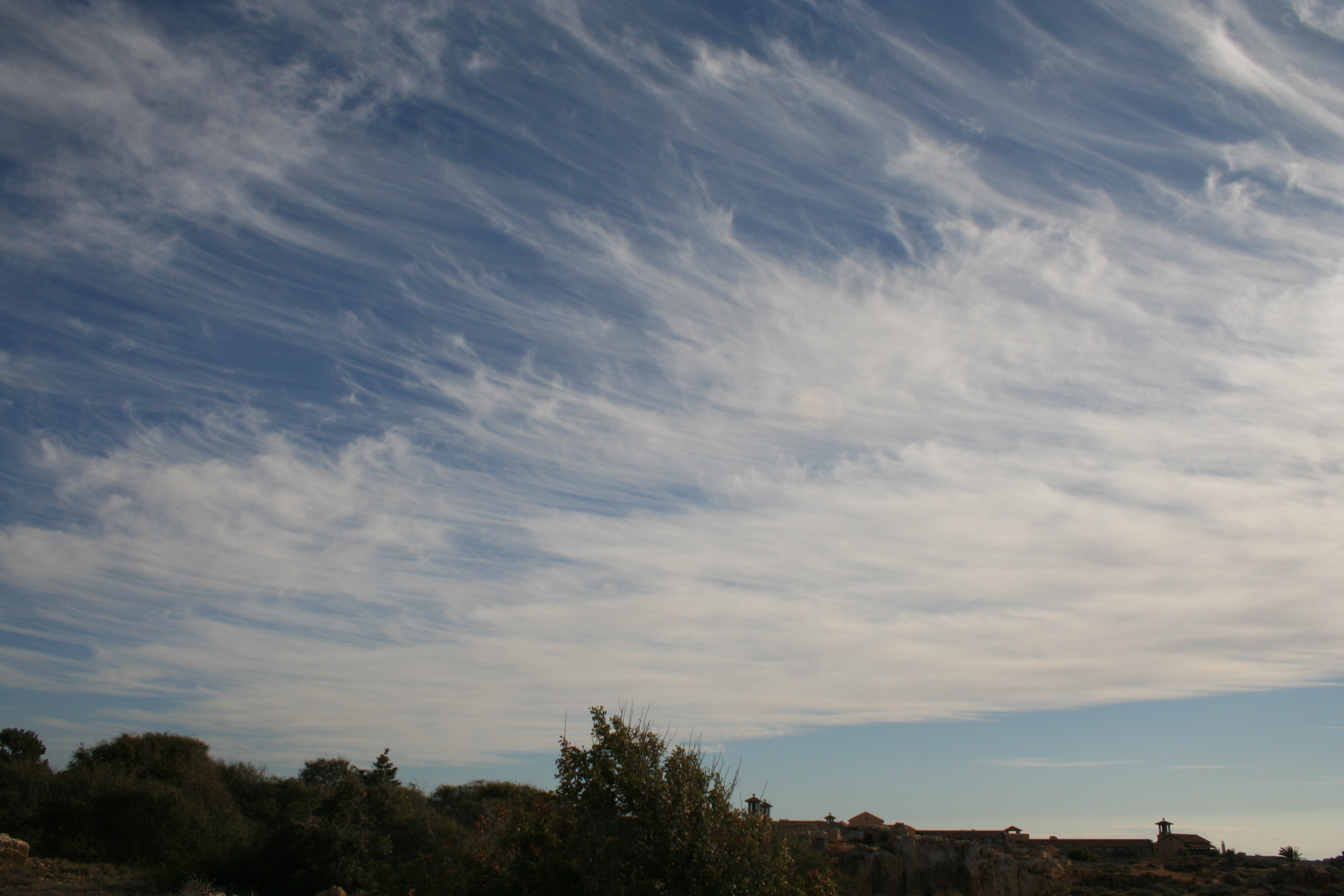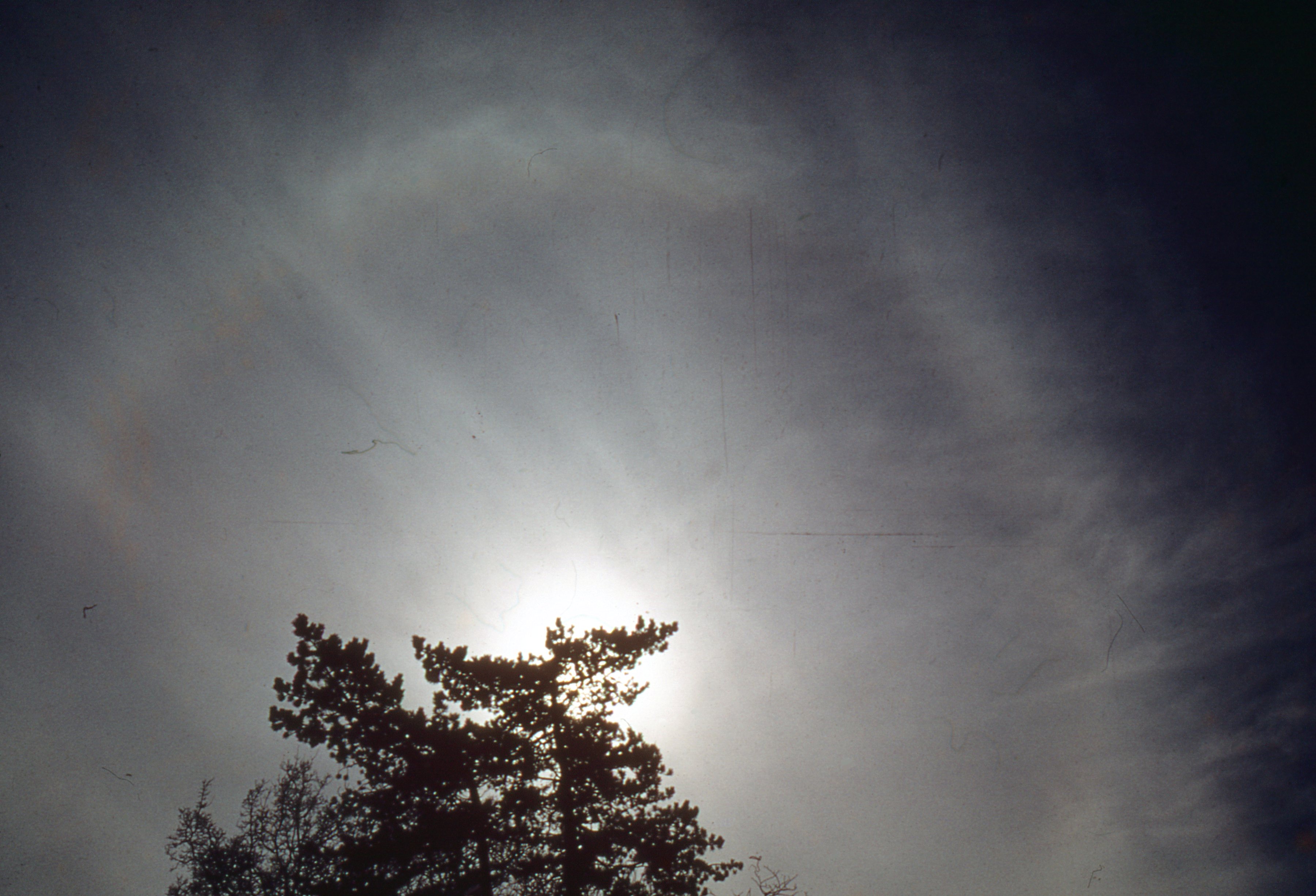About this page
There is limited value in watching the sky or, even, reading the barometer. Do the old salt or shepherd with their long experience of weather watching really know more than the professionals? I suggest not although experience of being out in the weather, watching how it behaves can be useful. Local experience can be of great use in interpreting a forecast in terms of local conditions. Read on and decide for yourself!
Related pages
The History
Meteorology, along with astronomy and medicine must be one of the oldest sciences. It probably all began when man first started to raise crops. Such rules as a clear sky with light winds leading to low overnight temperatures were known to the Chinese at least 3000 years ago. They are still useful, as anyone who has lost his dahlias to a Spring frost will know. But, if the night starts cloudy then how do you know whether breaks are going to occur or not?
Aristotle knew about red skies in the morning and the importance of haloes around sun or moon. These with a falling barometer and a backing wind may well be precursors of bad weather. But, even an experienced old salt cannot tell you how bad, when it will come, how far the wind will back before it veers and when it will veer.
As a young lad, beginning to take an interest in the weather, a well meaning friend gave me a "forecasting" gismo. This was of plastic, in the form of concentric discs. These were rotated to align wind direction and barometric tendency (rising, falling and rate of change). A forecast could then be read off. Similar gadgets are available today. Several firms now market recording barometers, very useful in themselves, but with the same ideas built into the software. Are such forecasting methods of any value? Another friend gave me a donkey made of pottery with a string tale. The instructions were - If tail dry - Fine If tail moves - Windy If tail wet - Rain If tail cannot be seen - Fog If tail falls out - Earthquake. That is about the limit of information from such gismos as my old plastic weather wheel.
-
Some more history
Over 160 years ago, John Ruskin (1839) put his finger on the answer when he wrote (a fuller version is below) - "The meteorologist is impotent if alone; his observations are useless; for they are made upon a point, while the speculations to be derived from them must be on space.........................."
Rather more prosaically- and succinctly, with some ellipsis -, the Head of the UK National Met Centre (Central Forecast Office) said - "In order to be able to forecast anywhere, you have to able to forecast everywhere."
-
The Limitations of Single Observer Forecasting
In both cases, they were saying that the atmosphere is a complex machine and that what happens at any one place is a result, to a greater or lesser extent, of what is happening everywhere else. That is not to say that experience should be ignored any more than a rapidly rising or falling barometer. However, it is worth noting that to be able to forecast on a regular basis for -
- A few minutes ahead needs information within your vicinity.
- A few hours ahead needs information from an area comparable to the British Isles.
- One day ahead needs information from most of the North Atlantic, the Eastern USA and much of Europe.
- Several days ahead needs knowledge of global weather.
An Example
Anyone who has done the RYA Yachtmaster/Coastal Skipper course will have learned about a "typical" frontal weather sequence. If the pressure starts to fall, the wind starts to back and high (cirrus) cloud is streaming in then one can be fairly sure that a warm front is approaching.
You may see a sky like this showing streaks of cirrus
Followed by a halo, maybe like this:
The following will, almost certainly, occur -
At first -
- the pressure will fall more quickly,
- the wind will continue to back and increase,
- cloud will increase and lower,
- it will start to rain.
At some stage,
- The pressure will stop falling,
- the wind will veer to a more westerly direction,
- the rain will cease but there may be drizzle,
- visibility will be poor, perhaps with mist or fog.
Later,
- there will be a spell of heavy rain,
- the wind will then veer to north of west as the cloud breaks,
- pressure will start to rise,
- later there will be showers.
All that is useful information. But, questions that the sailor might ask are -
For immediate use -
- How far will the wind back and how strong will it become?
- When will it veer for the first time?
- Will the visibility get down to fog levels?
- When will the wind veer, again, to north of west?
- How strong will it become?
For longer term planning -
- For how long will it stay north of west?
- Will a high with settled weather develop?
- Or will there soon be another warm/cold front sequence?
Clearly, none of these questions can be answered from the single observation of the pressure, wind and cloud.
What To do at sea?
The moral is - watch your barometer, observe changes in wind and cloud, try to understand why they are changing. Are these just diurnal effects such as the sea breeze or something bigger? BUT - ignore at your peril the National Weather Service forecasts produced by professionals using the most powerful computers and the most advanced theories capable of being handled by the hardware. They may not be accurate, but they will usually be useful.
Use your observations and your experience to help monitor the weather and the forecast. It follows from what I have said above that those little gismos that claim to predict weather instantly are no more than a bit of fun. Their only practical use is as recording barometers. I do have one of those on board that lets me see hourly readings of pressure over the past 24 hours..
The real value of the Mark 1 eyeball
The forecaster, human or computer cannot tell you about the approaching thunderstorm, that disturbed water showing an approaching squall or those yachts up to wind that are suddenly heeling or dropping their sails. Small weather details may be predicted in general terms but not specifically. Watching for such details that are small in the overall Weather scene but large to the individual yacht is the most effective use of single observer forecasting. You will not beat the forecasters and their models for the large scale. You can see small local effects and act as necessary.
Appendix
John Ruskin (1839)
The full article is held at the archives of the Royal Meteorological Society. A fuller excerpt of the most important part of the paper is as follows -
"There is one point, it must now be observed, in which the science of meteorology differs from all others. A Galileo, or a Newton, by the unassisted workings of his solitary mind, may discover the secrets of the heaven, and form a new system of astronomy. A Davy in his lonely meditations on the crags of Cornwall, or in his solitary laboratory, might discover the most sublime mysteries of nature, and trace out the most intricate combinations of her elements. But, the meteorologist is impotent if alone; his observations are useless; for they are made upon a point, while the speculations to be derived from them must be on space. It is of no avail that he changes his position, ignorant of what is passing behind him or before; he desires to estimate the movement of space, and can only observe the dancing of atoms; he would calculate the currents of the atmosphere of the world, while he only knows the direction of a breeze.
It is, perhaps, for this reason that the cause of meteorology has been so slightly supported; no progress can be made by the enthusiasm f an individual; no effect can be produced by the gigantic efforts of a solitary intellect, and the co-operation demanded was difficult to obtain, because it was necessary that the individuals should think, observe and act simultaneously, though separated from each other , by distances, on the greatness of which the utility of their observations depended the utility of the observations."


